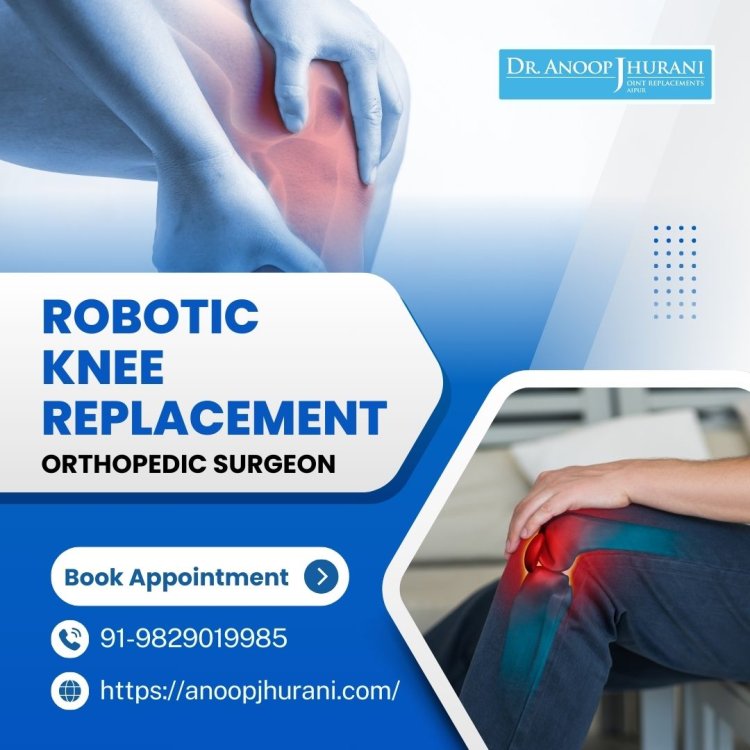Managing Severe Osteoarthritis-From Diagnosis to Knee Surgery
Dr. Anoop Jhurani is a Robotic knee replacement doctor in Jaipur, India. Book an appointment online with Dr. Anoop Jhurani for treatment.
Share this Post to earn Money ( Upto ₹100 per 1000 Views )

When osteoarthritis reaches an advanced stage, the protective cartilage in the knee joint wears away completely, leading to painful bone-to-bone contact. This severe condition not only limits mobility but also significantly impacts the quality of life. Understanding the solutions for severe osteoarthritis, including the increasingly popular robotic knee replacement surgery, is crucial for those seeking relief.
Initial Treatment Options for Severe Osteoarthritis
Before considering surgery, doctors typically recommend several non-surgical treatments aimed at managing pain and improving joint function:
1. Weight Reduction: Carrying extra weight puts additional stress on the knee joints. Losing weight can help reduce pain and slow the progression of osteoarthritis.
2. Physiotherapy: Targeted exercises can help strengthen the muscles around the knee, improving stability and reducing pain.
3. Lifestyle Modifications: Adjusting your daily activities to minimize stress on the knee can be beneficial. This might include avoiding high-impact exercises and using supportive footwear.
While these conservative treatments can provide relief, they may become less effective as osteoarthritis progresses to an advanced stage.
When to Consider Knee Replacement Surgery
When non-surgical treatments fail to alleviate the symptoms of severe osteoarthritis, knee replacement surgery, or knee arthroplasty, becomes the preferred solution. This surgical procedure involves replacing the damaged surfaces of the knee joint with artificial implants, which can relieve pain, correct joint alignment, and restore mobility.
Why is Robotic Knee Replacement Surgery So Popular?
1. Precision: The robotic system uses advanced computer software to create a 3D model of the patient's knee. This model allows the surgeon to plan the procedure in detail, ensuring the precise placement of implants.
2. Reduced Recovery Time: The accuracy of robotic surgery often leads to less tissue damage during the procedure, resulting in a faster recovery and less post-operative pain.
3. Improved Outcomes: Robotic-assisted surgery allows for better alignment and balance of the knee joint, which can enhance the longevity of the implant and improve overall joint function.
Dr. Anoop Jhurani is a leading expert in robotic knee replacement surgery in Jaipur. His extensive experience has helped countless patients regain their mobility and return to their daily activities with minimal discomfort.
Conclusion
Severe osteoarthritis, characterized by bone-to-bone contact in the knee joint, can be debilitating. While initial treatments like weight reduction, physiotherapy, and lifestyle modifications can provide some relief, knee replacement surgery remains the most effective solution when these measures fail. Robotic knee replacement surgery, with its precision and improved outcomes, offers a promising option for those suffering from advanced osteoarthritis. Consulting with an experienced surgeon like Dr. Anoop Jhurani in Jaipur can help ensure a successful procedure and a smooth recovery.

















